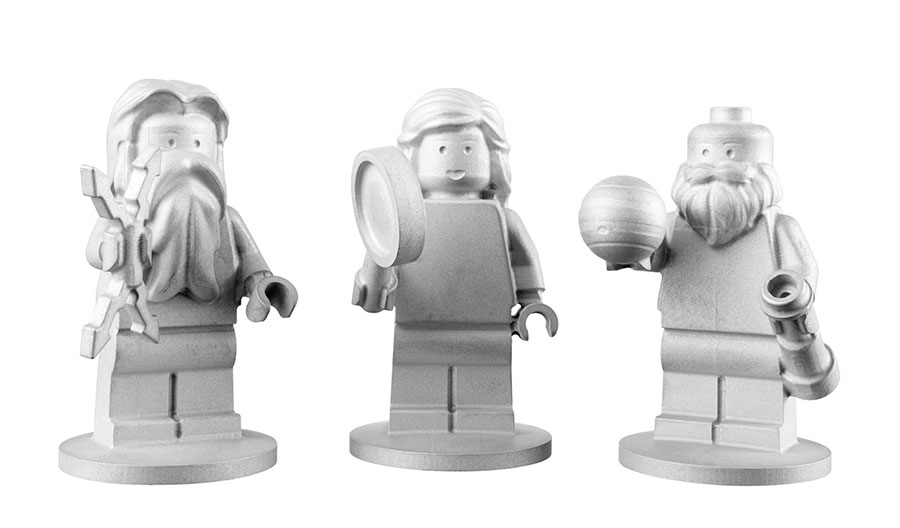In 2014 when Tesla founder, billionaire Elon Musk, announced that he wanted to establish a colony on Mars with his space company, SpaceX, he upped the stakes in the race to become the first to place humans further into space than ever before. Unfortunately, Musk just lost.
As the Juno space probe approached the planet Jupiter on 4 July of this year, three lucky passengers onboard could lay claim to being the first to reach the fifth rock from our sun. Well, they may have resembled the human form, but they weren’t actually breathing. And they were made of aluminum. Three Lego minifigures were placed aboard the NASA mission in 2011, and have been drifting toward Jupiter for the past five years. The crew’s mission? To inspire children to explore science, technology, engineering and mathematics, and to dream impossible dreams that may well see our grandchildren embarking on such a journey one day.
A joint outreach and educational program named Lego Bricks in Space was established between NASA and the Lego Group before the launch of Juno, and while the space probe’s principal goal is to understand the origin and evolution of Jupiter, the minifigures are boldly entering unchartered territory as symbolic space scouts.
So, who exactly are these three lucky passengers? The crew consists of the Roman god Jupiter, his wife Juno and the “father of science,” Italian astronomer Galileo Galilei. In Greek and Roman mythology, Jupiter drew a veil of clouds around himself to hide his mischief, but from high-up Mount Olympus, Juno was able to peer through the clouds and see Jupiter’s true nature. She’s certainly not leaving him alone on a journey of 365 million miles after that. The Juno spacecraft will also be looking beneath the clouds, to help NASA understand the planet’s structure and history. The minifigure of Juno holds a magnifying glass to signify her search for the truth, while her husband holds a lightning bolt. The third Lego crew member, Galileo, who made several important discoveries about Jupiter in 1610, is depicted holding a telescope.
To withstand the extreme temperatures the Lego crew would endure, the figures were milled from a single block of aluminum, a metal with a melting point of 1,221°F. While other metals have a higher melting point, another consideration was that aluminum is non-magnetic and wouldn’t interfere with onboard equipment.
Lego’s goal, beyond exciting kids everywhere, is an effort to help broaden awareness around the importance of planetary research.
It may seem like science fiction now, but many notable scientists and business people have acknowledged that we need to start looking at future homes for humanity. Just in case. Through the minifigures on Juno, Lego wants children to dream up their own stories and adventures and explore their own innate creativity, hopefully resulting in an exploration of their everyday lives.
Despite the trio being made from one solid piece of metal to prevent them from coming apart during the six-year mission, the crew will unfortunately not be coming back to earth. In around one year’s time, during its 37th orbit, Juno will plummet toward Jupiter in a controlled deorbit and burn up and disintegrate in the planet’s atmosphere.
The controlled deorbit will eliminate space debris and the risks of contamination in accordance with NASA’s Planetary Protection Guidelines. Yes, unbelievably, there are already rules in place to preserve the pristine nature of celestial bodies and prevent contamination in space. Around 104 states, representing every space-faring nation, and some aspiring ones too, have signed the Outer Space Treaty, promising to abide by the rules of planetary protection. Now if only we could get earth included in that deal …




































